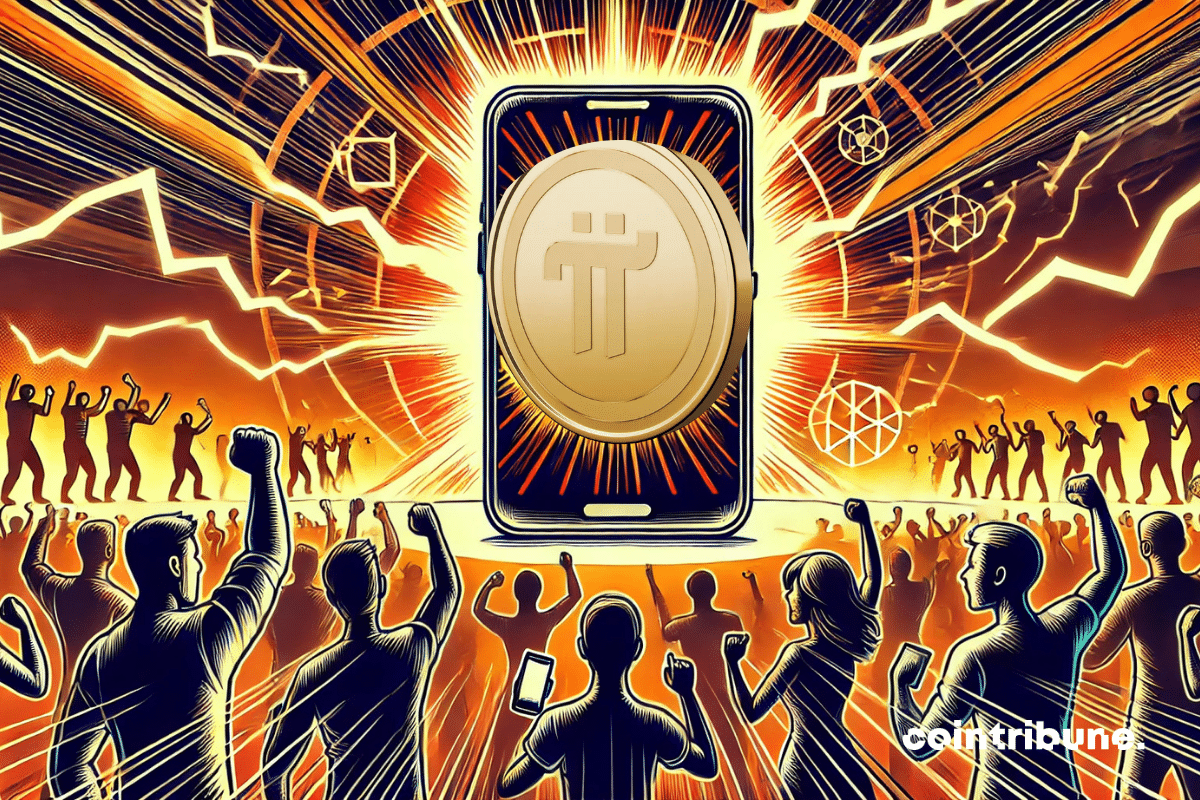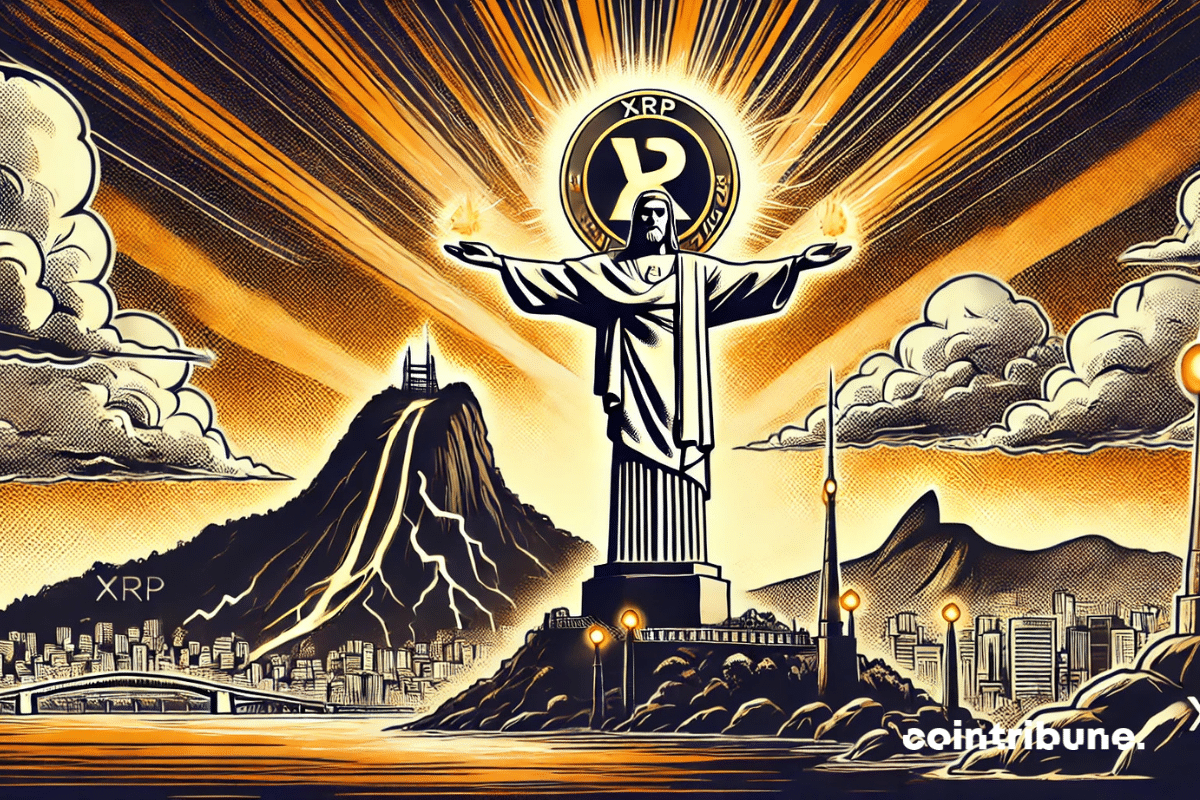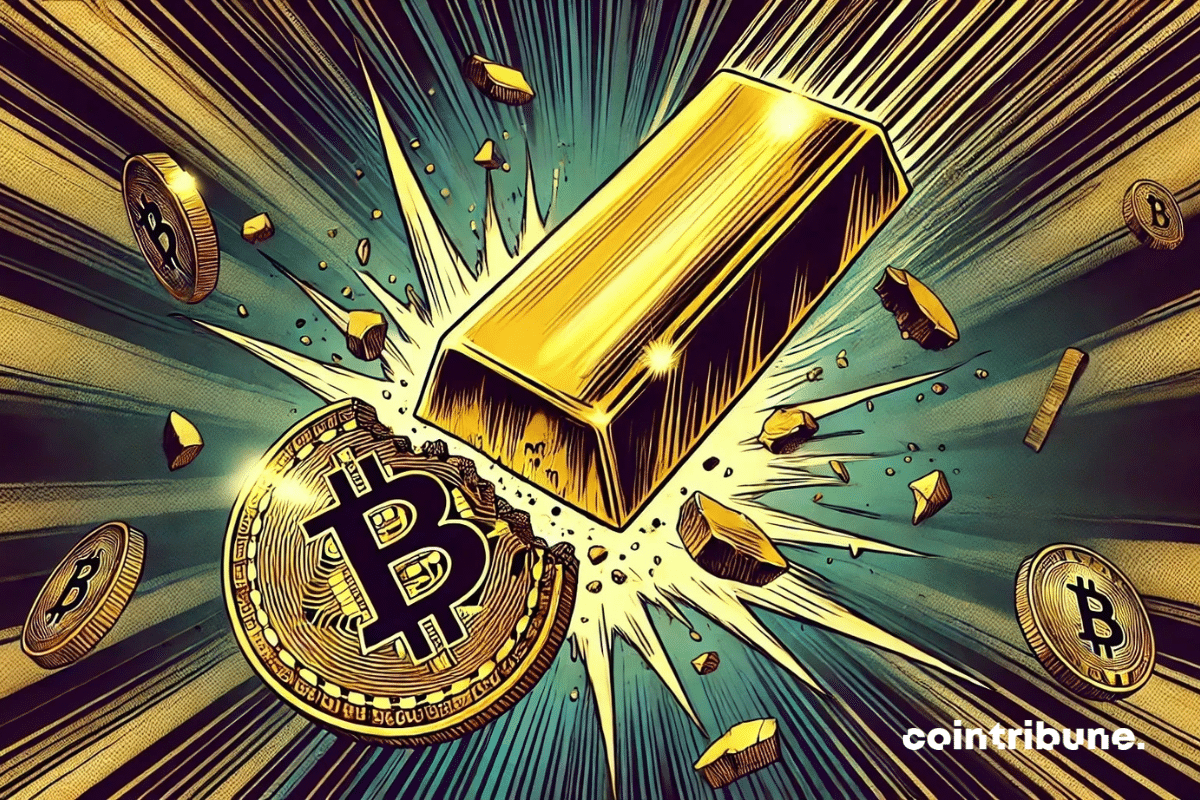Michael Saylor proposes a bold vision: the United States should acquire 20% of the circulating bitcoins. In a speech at CPAC, he stated that such a strategy could not only strengthen the dollar but also help pay off the national debt. Behind this financial ambition lies a geopolitical struggle where every major power seeks to assert itself in the digital economy of tomorrow.
News
Pi Network set to revolutionize crypto? The numbers are skyrocketing and experts are in a frenzy! All the details in this article.
Public financial management is a sensitive topic, especially when it is championed by a polarizing figure like Elon Musk. Since his appointment at the head of the Department of Government Efficiency (DOGE), the entrepreneur has promised a drastic reduction in federal spending to avoid a "bankruptcy of the United States." He announced that he has saved 8 billion dollars by canceling a government contract. A spectacular figure, but quickly contested by several media outlets: the contract in question was actually worth only 8 million dollars.
The SEC, once a bastion of conservatism, is finally awakening to the enchanting song of cryptocurrencies. ETFs are making a grand entrance, and the agency, once inflexible, seems to be discovering the virtues of compromise.
Microsoft is preparing to host the new versions of OpenAI's language models, including GPT-4.5 and GPT-5. According to recent information, the first implementation of GPT-4.5 could take place as early as next week, while GPT-5 is expected by the end of May.
Financial institutions around the world are scrutinizing blockchain technology, oscillating between skepticism and opportunism. Indeed, the European Central Bank (ECB), after years of analysis, is taking a significant step forward with the announcement of a blockchain-based interbank settlement project. This initiative, which aims to enable banks to settle their transactions in central bank money on a blockchain infrastructure, could mark a decisive turning point in the modernization of payments in Europe.
Vitalik Buterin expressed his disappointment over the accusations that Ethereum is "bad and intolerant" due to its lack of support for blockchain casinos. He emphasized that other chains readily accept any application, including gaming platforms, which some argue makes them superior. According to Buterin, this perspective represents a reversal of values.
Under the guidance of Anonymous, the magnate Musk is exposed: crypto manipulations, power excesses, and sacrificed workers, the Tesla empire wobbles in the face of digital anger.
The volatility of the crypto market is nothing unusual, but the recent bearish trends have caught the attention of analysts. Nearly a quarter of the 200 largest cryptocurrencies have hit their lowest level in a year, a phenomenon that, according to some experts, could signify an imminent market capitulation. This situation, characterized by cascading liquidations and panic movements, raises questions about the direction the market will take in the coming weeks.
Fort Knox, that golden sanctuary where America hides its reserves, is suddenly in the spotlight. Donald Trump promises to unveil its secrets. Prediction markets are buzzing: bets on an audit before May 2025 are skyrocketing to 70%. Amid skepticism and speculative fever, one question looms: what do the walls of this legendary bunker really hide?
After a spectacular climb, the XRP price has stabilized below its ATH. Check out Elyfe's analysis to decipher the technical outlook for XRP.
The figure hits like a clap of thunder: 30% of Mastercard transactions are now tokenized. A silent revolution, almost sneaky, that redraws the boundaries of finance. Behind this percentage lies a strategic shift, a mockery of the skeptics. But this metamorphosis is just a prelude. The burning question is: what financial world emerges when a traditional giant embraces crypto to this extent?
The LIBRA token, briefly supported by Argentine President Javier Milei, has proven to be a financial disaster for the majority of its investors. According to a study conducted by a blockchain research firm, over 13,000 traders suffered losses exceeding a total of 251 million dollars.
Amid the bustling crypto market, Brazil marks a historic turning point by approving the world's first XRP spot ETF, while a local bank prepares to launch an innovative stablecoin on the XRP Ledger network.
Amidst a disheartening stagnation of Bitcoin and a rush towards gold, the markets are shaken by this dual phenomenon where each rise in gold seems to crush the weak hopes of BTC.
Bitcoin has been navigating a narrow corridor for weeks, between $93,300 and $98,500. A precarious, almost hypnotic balance, where each oscillation seems to hold its breath. Traders scrutinize the charts, indicators flash silently. But this stagnation is merely an illusion. Beneath the surface, the numbers whisper a different truth: consolidation could soon shatter. The burning question is: how long will this calm last before the storm?
On February 19, 2025, Microsoft unveiled a major breakthrough in the field of quantum computing with the launch of its first quantum processor, named Majorana 1. This new chip, based on "topological superconductors," would enable the construction of quantum computers capable of solving complex industrial problems in just a few years, rather than decades. The result of nearly 20 years of research, this innovation could revolutionize not only computing technology but also the crypto world.
A New York court has just ordered the permanent confiscation of the assets of Sam Bankman-Fried (SBF), the former CEO of FTX, with a total value nearing one billion dollars. This historic decision comes as the crypto exchange has just begun to repay its first creditors.
Cryptos have often been seen as a challenge for regulators, but rarely has a state struck as hard as this. Indeed, Nigeria, one of the most influential economies in Africa, has just filed a high-profile lawsuit against Binance, the largest crypto exchange platform in the world. The government is demanding $81.5 billion, a colossal amount that, according to Nigerian authorities, corresponds to unpaid taxes and major economic damages. This case marks a new escalation in the standoff between states and giants of the crypto sector. Amid allegations of tax fraud, employee detentions, and diplomatic pressures, Binance finds itself at the center of a dispute that far exceeds legal boundaries.
Access to cryptocurrencies remains a barrier for the general public, often deterred by the complexity of wallets and private keys. However, the mass adoption of Bitcoin depends on the ability of companies to make its use as seamless as a traditional Web2 service. In this dynamic, Google seems to want to play a key role by facilitating the integration of Bitcoin wallets through its own ecosystem. An initiative unveiled by Kyle Song, a Web3 specialist at the tech giant, which paves the way for broader BTC adoption. This announcement raises as many hopes as questions about the future of decentralization.
"We, central bankers, should study it and explore the technology on which it is built. Studying Bitcoin will not harm us – on the contrary, it will strengthen us," said Aleš Michl, governor of the Czech National Bank (CNB). These statements come three weeks after he presented, during a CNB board meeting on January 30, a proposal to create a "test wallet" in bitcoin. This initiative aims to analyze this highly volatile asset and experiment with its use in the central bank's reserves.
The dominance of the US dollar in international trade is being challenged more than ever. A powerful bloc, the BRICS, is actively seeking to free itself from this by developing an alternative currency. In response to this offensive, Donald Trump, true to his style, does not intend to remain a spectator. The American president is wielding the threat of massive economic sanctions to deter any attempt to undermine the hegemony of the greenback. But can this strategy truly reverse the trend, or is it likely to accelerate the ongoing dynamics?
As Bitcoin hovers around 96,000 dollars, Ki Young Ju, CEO of CryptoQuant, asserts that a major correction should not jeopardize the bull run in 2025. This analysis comes amid a context of growing institutional adoption, particularly by U.S. states.
Binance US announces the resumption of deposits and withdrawals in United States dollars (USD), ending 18 months of suspension of its services. This reactivation comes as the regulatory framework for cryptocurrencies is becoming clearer in the United States.
Bitcoin sways under a threatening sky, and nearly 300 million dollars vanish in the storm. Traders, like tightrope walkers, are scrutinizing the bar at 96,000 dollars.
MicroStrategy navigates like an insatiable giant. As bitcoin hovers around $96,000, the firm led by Michael Saylor has just unveiled a new bold move: a $2 billion convertible bond issuance aimed at boosting its bitcoin treasury. A daring, almost provocative strategy that raises questions as much as it fascinates. How has a traditional company transformed into a crypto behemoth? And above all, how far will this quest go?
Since its last rebound, bitcoin has been in a consolidation phase for the past two weeks. Find Elyfe's analysis to decipher the technical perspectives of BTC.
The Hyperliquid token (HYPE) experienced a decline of nearly 6% over the past 24 hours, despite the recent launch of HyperEVM, an update aimed at expanding the decentralized finance (DeFi) capabilities of the platform. This price drop occurs in a context where a positive market reaction was expected following this significant innovation.
The largest NFT marketplace in the world, OpenSea, has just announced the suspension of its new XP rewards system, introduced on January 28, following a wave of criticism from its community. This decision comes at a particular time when the platform is trying to reinvent itself with the recent launch of its SEA token.
In February 2025, RealT celebrates its sixth anniversary and continues its international expansion with a major new milestone: the launch of its first property in Colombia on February 20, 2025. Following its successful establishment in the United States and Panama, this new acquisition confirms the platform's development strategy in the Latin American markets.





























